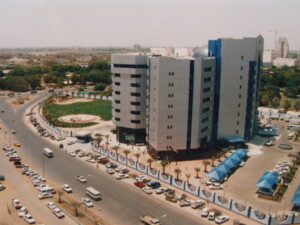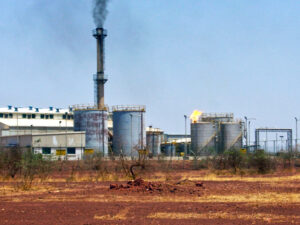WFP Market Monitor shows new sharp rise in Sudan food prices
Political and economic instability resulting in hyperinflation in Sudan are forcing more Sudanese into poverty, and inability to afford the basic necessities of life. The latest estimates show that currently one-third of the population, or 15 million people, face food insecurity throughout the lean season in Sudan, which lasts through September.
 Graphic: WFP
Graphic: WFP
Political and economic instability resulting in hyperinflation in Sudan are forcing more Sudanese into poverty, and inability to afford the basic necessities of life. The latest estimates show that currently one-third of the population, or 15 million people, face food insecurity throughout the lean season in Sudan, which lasts through September.
Acute food insecurity data indicates that around 9.6 million people across Sudan were highly food insecure and classified in Crisis (Integrated Food Security Phase Classification (IPC) Phase 3 or above) from April to May 2022. This includes 2.3 million people in IPC Phase 4 (Emergency) and 7.3 million in IPC Phase 3 (Crisis)”, a report released in May indicated.
The latest UN World Food Programme (WFP) Market Monitor for Sudan issued on Thursday, shows that the cost of a WFP local food basket in Sudan increased in June by 8.4 per cent over the previous month, which at SDG457.80, represents a 57.8 per cent increase since January, according to the WFP. By comparison, in June 2021, a local food basket cost SDG198.00.
Food Security Outlook
In June 2022, the official foreign exchange rate was around SDG446.35/USD1, while the average parallel one was 570SDG/USD1, while the commercial banks’ average rate was around 566SDG/1 US$. The inflation rate showed a decrease in May 2022 (192.21 per cent) compared to 220.71 per cent in April 2022, while the monthly percentage change in the consumer price index (CPI) was +6.8 per cent compared to +4.17 per cent in April. The WFP local food basket cost (LFB) increased to SDG457.8 in June compared to SDG422.3 in May 2022.
The average casual labour daily wage rate has decreased to SDG2,942, which is a decrease of 3.04 per cent compared to May 2022 while it was higher by 142.7 per cent compared to the same period of the previous year (June 2021). On the other hand, there was sustained food insecurity and economic crisis which is expected to continue for the ongoing lean season, which is far below the previous season’s harvest. The sorghum price in El Gedaref Auction Market is slightly increased by 1.0 per cent compared to the previous month (May 2022) and 131.8 per cent compared to the previous year (June 2021). As a result, the prices of crops and foods are expected to maintain their increasing trends during the ongoing lean season, June – September 2022.
Hunger
In reply to questions from Radio Dabanga regarding requests for additional aid to the displaced of Darfur last week, the WFP in Sudan said in a statement that it regrets that it’s cash assistance to internally displaced people has been delayed. “WFP is currently facing a funding shortfall of $366 million from now until the end of 2022. Additionally, insecurity across Darfur impedes our ability to deliver assistance to certain locations, particularly areas where there have been recent clashes.”
Acknowledging the depth of the crisis, WFP underlines: “Our first priority is to save lives and provide emergency food or nutrition assistance, especially to internally displaced people or refugees who have been displaced from their homes. WFP is currently in a position where we are having to prioritise assistance based on the resources available. These are always heart wrenching decisions to make, knowing that we cannot help everyone in Sudan who needs it.”
“This is getting even more challenging for WFP, as the number of people who are food insecure in Sudan has drastically increased. Currently one-third of the population, or 15 million people, face food insecurity throughout the lean season in Sudan which lasts through September. By then, we expect the number to have further increased up to 18 million people, or 40 per cent of the country’s population,” the WFP told Radio Dabanga.
WFP in Sudan has faced challenges on the ground, especially after three major WFP warehouses in the North Darfur capital of El Fasher were raided and looted in December 2021. The unstable security situation has also made matters precarious for logistics, as drivers of convoys transporting WFP aid have been targeted by bandits.











 and then
and then